
The Best 17 Facts About Red Fox: Secrets of Vulpes vulpes
Facts About Red Fox
The red fox, scientifically known as Vulpes vulpes, is one of the most intriguing and widespread mammals across the globe. Their adaptability and cunning nature have made them a subject of fascination for centuries. This article delves into the most interesting facts about red fox, shedding light on their behaviors, habitats, and unique characteristics. Whether you are a wildlife enthusiast or just curious about these charismatic creatures, our comprehensive guide will provide you with a wealth of knowledge.
Overview of the Red Fox
Habitat and Distribution
Firstly, the red fox boasts an extensive range, inhabiting the entire northern hemisphere, from the Arctic Circle to North Africa and North America to Central America. In fact their adaptability allows them to thrive in a variety of environments, including forests, grasslands, deserts, and even urban areas. This remarkable ability to coexist with human presence makes them one of the most common fox species seen worldwide.
Physical Characteristics
Red foxes are easily recognizable due to their striking red fur, although they can also exhibit color variations such as black, grey, or a mix of red and black known as the cross fox. They possess a bushy tail with a distinctive white tip, black-tipped ears, and slender legs. Their elongated body and sharp facial expressions contribute to their cunning appearance. Notably, the red fox’s coat consists of long outer hairs that provide insulation against cold weather, making them well-suited for various climates.
Interesting Facts About Red Fox

Social Structure and Behavior
Red foxes are known for their solitary nature, although they sometimes form family groups during the breeding season. Male foxes, also called dog foxes, play a vital role in raising the young alongside the female. These family groups are typically observed in the early weeks of age of the pups. Despite being solitary hunters, red foxes communicate using a range of different sounds and body language to convey messages to one another.
Hunting and Diet
Red foxes are opportunistic feeders with a diet that includes small mammals, ground-nesting birds, small rodents, and even garbage cans in urban environments. They are adept hunters, using their acute hearing to detect the low-frequency sounds of small animals moving underground. Interestingly, they have a unique hunting technique that involves pouncing on their prey with precision.
Adaptation to Human Environments
Red foxes have shown an impressive ability to adapt to human environments, often found in suburban areas, city parks, golf courses, and even in crawl spaces of buildings. Their adaptability has led to an increase in urban red fox populations, showcasing their resilience and resourcefulness in finding food sources and shelter in proximity to humans.
Reproduction and Lifespan
The breeding season for red foxes typically occurs in winter, with the gestation period lasting around 51 days. Female foxes give birth to a litter of 4-6 pups, which are born blind and dependent on their mother for the first few weeks of age. Pups reach sexual maturity at around 10 months of age. The lifespan of a red fox in the wild averages 2-5 years, although they can live longer in captivity.
Facts About Red Fox Frequently Asked Questions
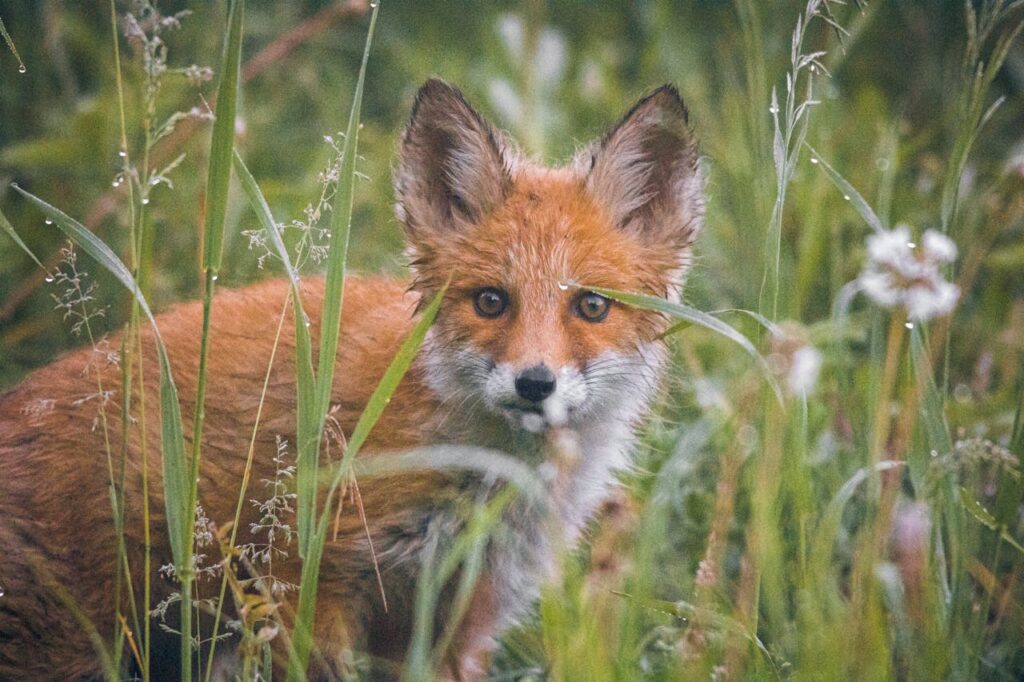
What are the most common habitats for red foxes?
Red foxes can thrive in a wide range of habitats, from forests and grasslands to deserts and urban environments. Their adaptability allows them to live in areas with human presence.
How do red foxes communicate with each other?
Red foxes communicate using a variety of sounds, body language, and scent markings. They are known to make different sounds such as barks, screams, and howls to convey messages.
What do red foxes eat?
Red foxes have a diverse diet that includes small mammals, birds, rodents, and even human leftovers from garbage cans. They are opportunistic feeders and adapt their diet based on availability.
How long do red foxes live?
In the wild, red foxes typically live between 2-5 years, although they can live longer in captivity. Their lifespan is influenced by factors such as predation, disease, and human impact.
Are red foxes solitary or social animals?
Red foxes are primarily solitary animals but may form family groups during the breeding season. Male and female foxes work together to raise their young during the early stages of life.
Adaptations and Unique Features
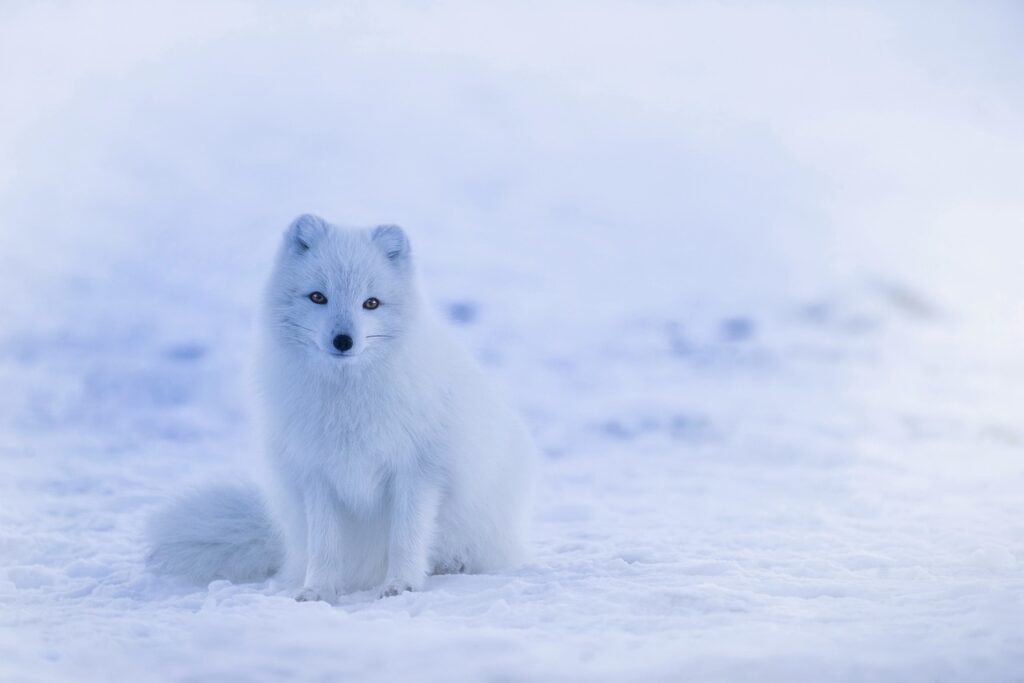
Color Variations and Fur Characteristics
Red foxes are well-known for their vibrant red fur, but did you know they exhibit various color variations? Besides the classic red coat, some red foxes can have black, grey, or even white fur. These color variations are more than just genetic quirks; they often help foxes blend into their environments, providing better camouflage against predators and prey alike. Cross foxes, for example, display a mix of red and black fur with a distinctive cross pattern on their backs.
One of the key features of the red fox is its bushy tail, often adorned with a white-tipped tail. Which adds to its striking appearance. This tail, also known as a “brush,” serves multiple purposes, including balance while running and warmth during cold weather. Additionally, the tail can be used to communicate with other foxes through visual signals.
Sensory Abilities and Hunting Techniques
Red foxes have developed remarkable sensory abilities that make them proficient hunters. Their keen sense of hearing allows them to detect low-frequency sounds of small animals burrowing underground. This acute hearing is crucial for locating prey like small rodents, which form a significant part of their diet. They also rely on their sharp vision and the tapetum lucidum, a layer in their eyes that enhances night vision, making them effective nocturnal hunters.
An intriguing fact about red foxes is their use of the Earth’s magnetic field to hunt. Research has suggested that red foxes may use the planet’s magnetic field as a targeting system to accurately pounce on their prey. This ability to sense low-frequency sounds and magnetic fields underscores their sophistication as predators.
Interaction with Humans and Urban Adaptation
Red foxes have shown an impressive ability to adapt to human environments. In many urban and suburban areas, they have become a common sight, often seen rummaging through garbage cans or exploring golf courses. These urban red foxes demonstrate a high level of adaptability, finding food sources such as pet food left outside or small game like rats and birds. Their presence in city parks and suburban areas highlights their resilience in the face of habitat loss and urbanization.
Living in close proximity to humans, red foxes have also developed behaviors to avoid conflict. They are generally shy and elusive, preferring to stay out of sight during the day and becoming more active at night. Their ability to thrive in various habitats, from the wild to urban environments, showcases their versatility and survival skills.
Fun and Interesting Facts About Red Fox
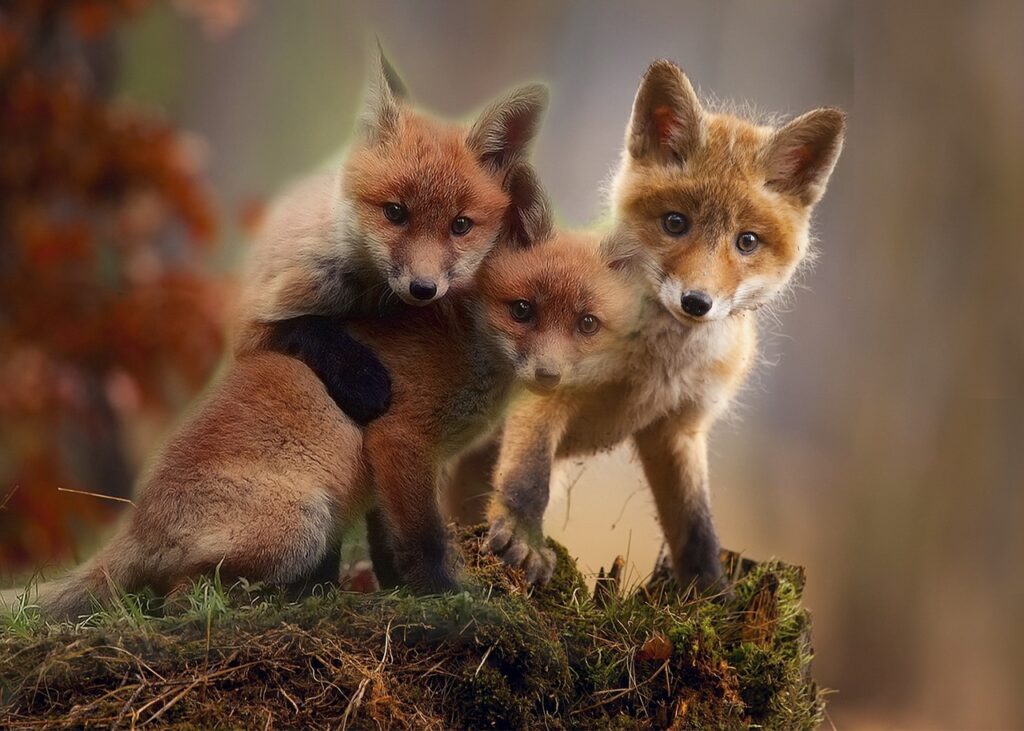
Social Behaviors and Family Life
Despite their reputation as solitary hunters, red foxes exhibit complex social behaviors, particularly during the breeding season. During this time, they form family groups, with both male and female foxes, known as dog foxes and vixens respectively, playing active roles in rearing their young. The pups are born blind and helpless, relying on their parents for warmth and nourishment. As they grow, they learn vital survival skills through play and exploration under the watchful eyes of their parents.
Communication and Vocalizations
Red foxes are known for their diverse range of vocalizations. They can produce different sounds to communicate with one another. These include barks, screams, howls, and even a peculiar sound known as “gekkering,” which is often heard during disputes or when playing. These vocalizations, combined with body language and facial expressions, help red foxes convey messages and maintain social bonds.
Conservation and Ecological Impact
While red foxes are not currently endangered, their populations face threats from habitat destruction, hunting, and disease. Conservation efforts focus on preserving their natural habitats and promoting coexistence with humans. Red foxes play a crucial role in the ecosystem by controlling the populations of small mammals and rodents, thus maintaining a balance in their habitats.
Facts About Red Fox Frequently Asked Questions
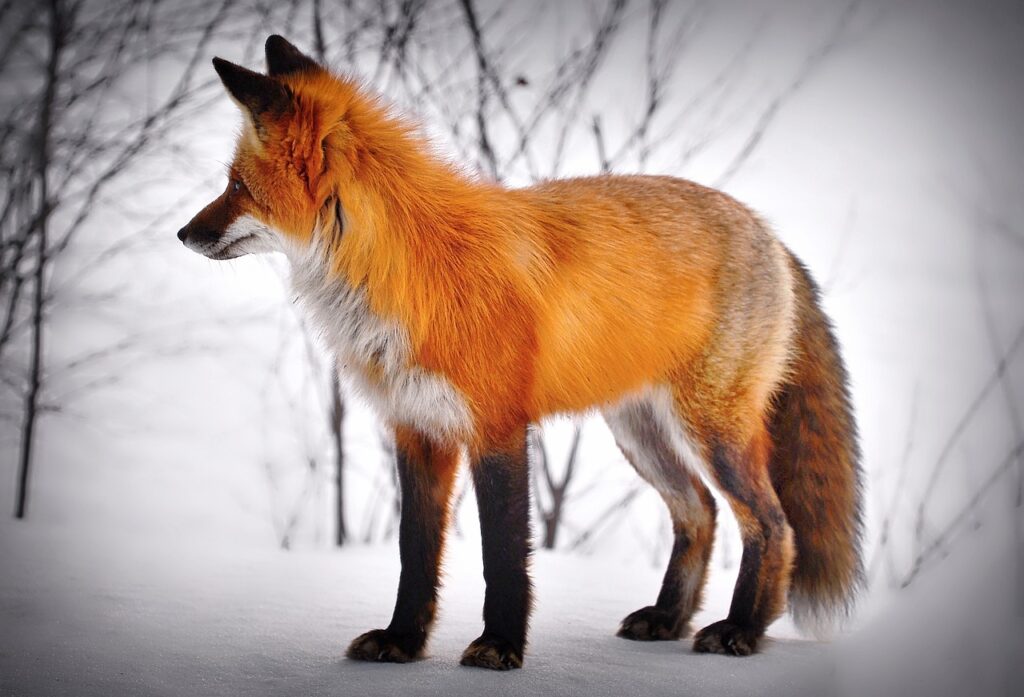
What is the gestation period for red foxes?
The gestation period for red foxes is approximately 51 days. Female foxes give birth to a litter of 4-6 pups, which are born blind and dependent on their mother for the first few weeks.
How do red foxes adapt to cold weather?
Red foxes adapt to cold weather through their thick fur, which provides insulation. Their bushy tails also help keep them warm by curling around their bodies when they rest.
Are red foxes considered invasive species?
In some regions, red foxes are considered invasive species. Because they can outcompete native wildlife and disrupt local ecosystems. Their adaptability and opportunistic feeding habits contribute to their invasive potential.
How do red foxes hunt in urban environments?
In urban environments, red foxes hunt for small mammals, birds, and insects. They also scavenge for human food waste, such as leftovers from garbage cans, and may take advantage of pet food left outside.
What role do red foxes play in the ecosystem?
Red foxes play a vital role in the ecosystem by controlling the populations of small mammals and rodents. This helps maintain a balance in their habitats and reduces the spread of certain diseases.
Fascinating Adaptations and Behavior
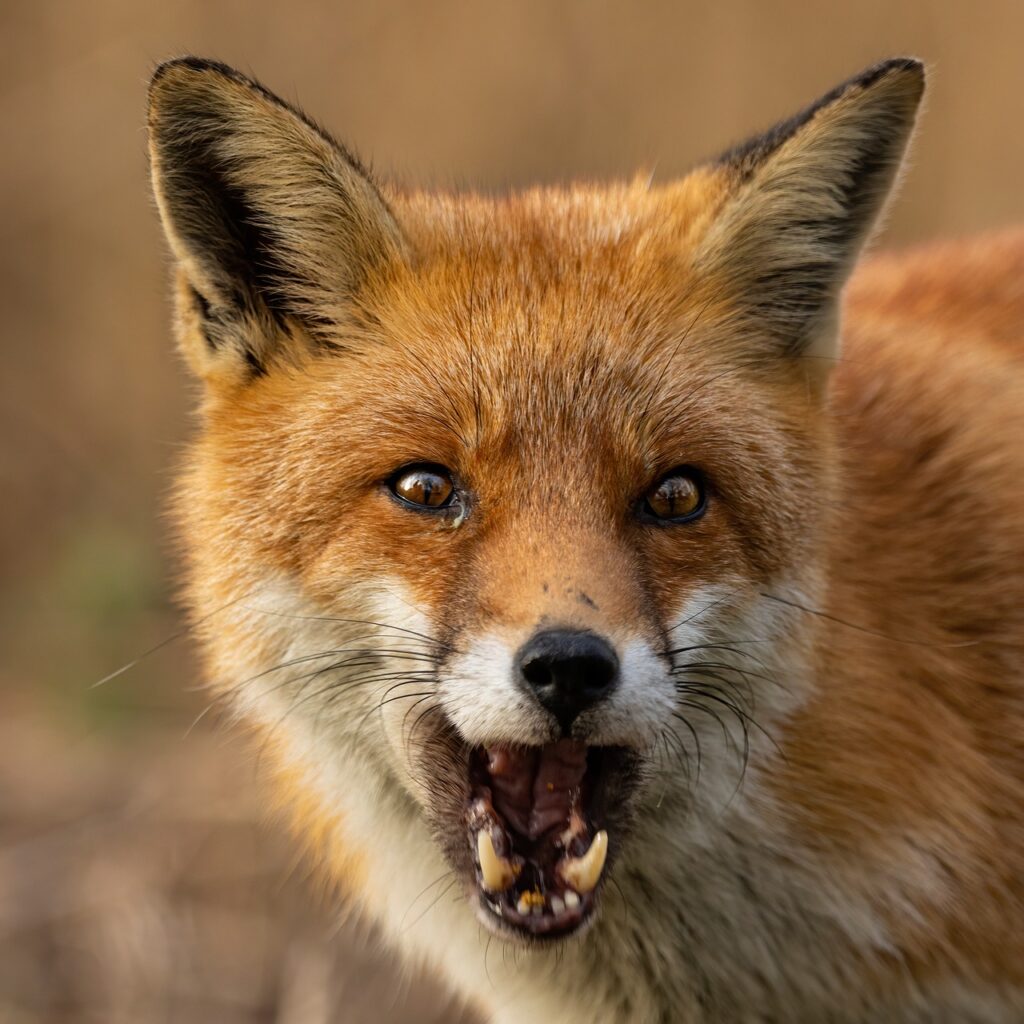
Communication and Social Interaction
Red foxes possess a rich repertoire of communication methods, which is crucial for their social interactions and survival. They use vocalizations, body language, and scent marking to communicate with each other. One of the most recognizable sounds is the red fox’s bark. Often heard during the mating season to attract partners. They also use high-pitched screams and howls to communicate across distances, particularly in dense habitats.
Scent glands located near their tail and paws allow red foxes to mark their territory and communicate their presence to other foxes. This scent marking plays a vital role in their social structure, helping to avoid conflicts and establish dominance. Red foxes also use facial expressions and body postures to convey emotions and intentions, further enhancing their ability to interact with other members of their species.
Survival Strategies and Predation
Red foxes have developed a variety of survival strategies to thrive in diverse environments. They are solitary hunters, often relying on their keen senses to locate prey. Their diet mainly consists of small mammals, but they are also known to eat birds, insects, and even carrion. In urban areas, red foxes have been observed scavenging for food in garbage cans and exploiting other food sources provided by human presence, such as pet food and waste.
One fascinating adaptation is their ability to store food for later consumption. Red foxes often bury surplus food, a behavior known as caching, which helps them survive during times when food is scarce. This ability to plan ahead and manage resources showcases their intelligence and adaptability.
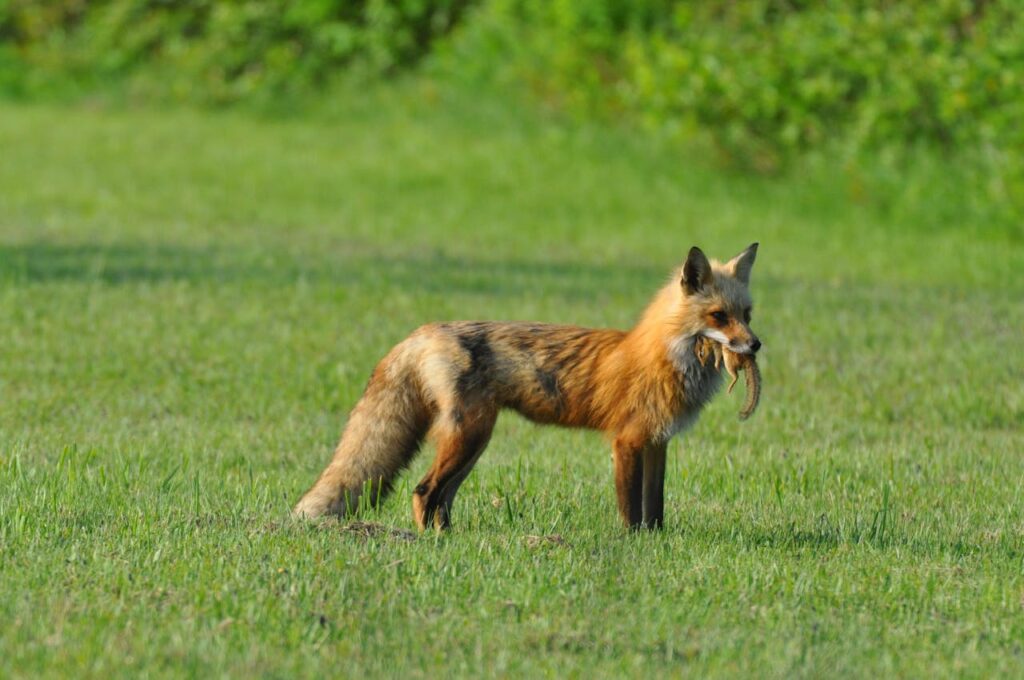
Breeding and Raising Young
The breeding season for red foxes typically occurs in late winter, with the gestation period lasting about 51 days. During this time, male foxes, or dog foxes, become particularly protective and provide food for the pregnant female. After giving birth, the female fox, or vixen, remains in the den to care for the pups, while the male continues to hunt and bring back food.
Pups are born blind and rely entirely on their mother for warmth and nourishment. As they grow, their eyes open after about two weeks, and they begin to explore their surroundings. By the time they reach a few months of age, they are more independent and start learning essential hunting and survival skills through play and imitation of their parents.
Interaction with Other Wildlife
Red foxes coexist with a variety of other wildlife species. They often compete with other predators like coyotes and gray foxes for food and territory. In areas where they are the dominant predator, red foxes play a crucial role in controlling the populations of small mammals, birds, and insects, contributing to the overall health of the ecosystem.
Interestingly, red foxes have also been observed engaging in playful interactions with other species, including domestic dogs and even larger predators like wolves. These interactions highlight their adaptability and ability to navigate complex social environments.
Conservation and Human Impact
Threats and Challenges
Despite their adaptability, red foxes face numerous threats from human activities. Habitat destruction, urbanization, and hunting pose significant challenges to their survival. In some areas, red fox populations are declining due to loss of natural habitats and increased human-wildlife conflicts. Additionally, diseases such as rabies and mange can have devastating effects on local fox populations.
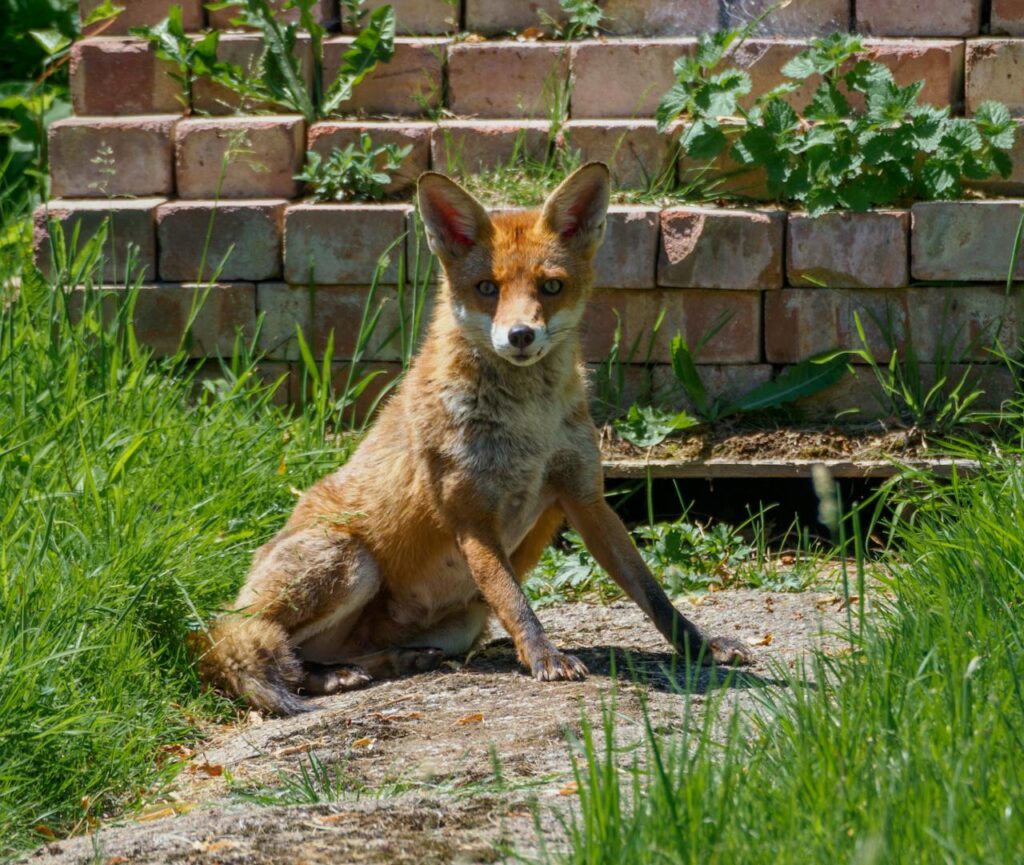
Conservation Efforts
Efforts to conserve red fox populations focus on preserving their natural habitats and promoting coexistence with humans. Conservationists work to protect critical habitats, such as forests and wetlands, and implement measures to reduce human-wildlife conflicts. Public education campaigns aim to raise awareness about the importance of red foxes in the ecosystem and encourage practices that minimize negative interactions, such as securing garbage and not leaving pet food outside.
Role in Ecosystems
Red foxes play a vital role in maintaining the balance of ecosystems. By controlling the populations of small mammals and insects, they help prevent overpopulation and the spread of diseases. Their presence also benefits other wildlife species by maintaining a healthy and diverse ecosystem. In some areas, red foxes are considered a keystone species, meaning their presence has a disproportionately large impact on the environment.
Next read my comprehensive article Fascinating Facts About Amur Leopards
Facts About Red Fox Frequently Asked Questions
How do red foxes adapt to urban environments?
Red foxes adapt to urban environments by utilizing available resources such as food from garbage cans, pet food, and shelter in parks and abandoned buildings. Their ability to navigate human-dominated landscapes and find food sources allows them to thrive in cities.
What are the main predators of red foxes?
The main predators of red foxes include larger carnivores such as wolves, coyotes, and birds of prey. In urban areas, domestic dogs can also pose a threat to red foxes.
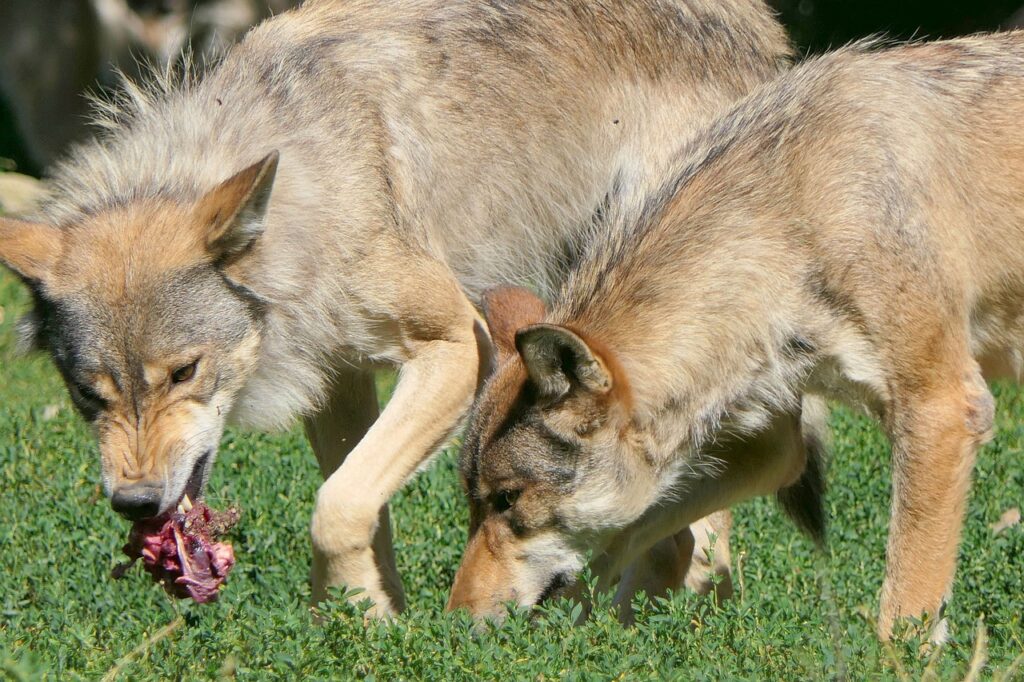
How can humans help in conserving red fox populations?
Humans can help conserve red fox populations by protecting their natural habitats, securing trash and pet food, and supporting conservation initiatives. Public education on the importance of red foxes and how to coexist peacefully can also contribute to their conservation.
Do red foxes pose any danger to humans or pets?
Red foxes are generally shy and avoid direct contact with humans. They pose minimal danger to humans but can occasionally prey on small pets if left unsupervised. Ensuring pets are kept indoors or in secure areas can prevent conflicts.
What are some interesting facts about red foxes?
Red foxes can hear low-frequency sounds of small animals moving underground and may use the Earth’s magnetic field to hunt. They exhibit various color variations and are known for their adaptability to different environments, from the wild to urban areas.
Red Foxes and Human Culture
Folklore and Symbolism
Red foxes have been prominent figures in folklore and mythology across different cultures. In many stories, they are depicted as cunning and clever creatures, often outsmarting other animals and even humans. This reputation for cleverness has made them symbols of intelligence and adaptability. In Japanese culture, the fox, or “kitsune,” is considered a magical creature with the ability to transform into a human, often playing roles that involve trickery and wisdom.
In European folklore, the red fox is frequently portrayed as a sly trickster. These tales have contributed to the fox’s image as a crafty animal, able to navigate and survive in various challenging environments. This cultural significance reflects the human fascination with the fox’s behavior and its adaptability.
Ecological Importance
Red foxes play a significant role in their ecosystems by regulating the populations of small mammals, birds, and insects. This predatory behavior helps maintain a balance, preventing overpopulation and the subsequent depletion of resources. Additionally, by controlling rodent populations, red foxes help reduce the spread of diseases that can affect both wildlife and human health.
The presence of red foxes can also indicate the health of an ecosystem. Healthy fox populations often signify a well-balanced environment with sufficient food sources and habitat diversity. Conservation efforts aimed at protecting red foxes can therefore have broader positive impacts on biodiversity and ecosystem stability.
Adaptation to Climate Change
As global temperatures rise and habitats change, red foxes continue to demonstrate their remarkable adaptability. In some regions, they are expanding their range northward, taking over territories previously inhabited by arctic foxes. This shift illustrates their ability to adapt to new environments and changing climatic conditions.
However, this adaptability also brings challenges. The competition between red foxes and other fox species, such as the arctic fox, can lead to changes in local ecosystems and displacement of native species. Therefore, understanding and managing these dynamics is crucial for conservationists working to preserve biodiversity in the face of climate change.
Facts About Red Fox Frequently Asked Questions
How long is the lifespan of a red fox in the wild?
The lifespan of a red fox in the wild typically ranges from 2 to 5 years. However, they can live longer, up to 10 years, in captivity due to the absence of predators and consistent food supply.
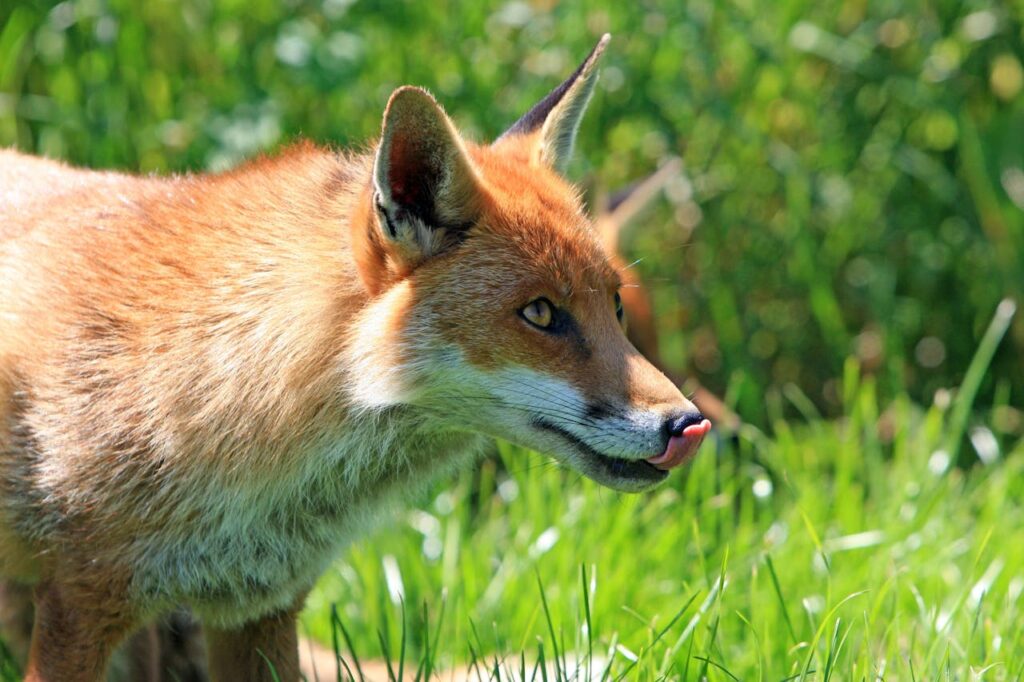
What is the scientific name of the red fox?
The scientific name of the red fox is Vulpes Vulpes.
How do red foxes communicate with each other?
Red foxes communicate through a combination of vocalizations, body language, and scent marking. They use various sounds such as barks, screams, and howls to convey messages and establish territory.
Are red foxes solitary or do they live in groups?
Red foxes are primarily solitary animals, but they can form family groups during the breeding season. These groups usually consist of a mated pair and their offspring.
What is the role of red foxes in the ecosystem?
Red foxes help control the populations of small mammals, birds, and insects, contributing to the balance and health of their ecosystems. They also act as indicators of environmental health and biodiversity.
Facts About Red Fox Conclusion
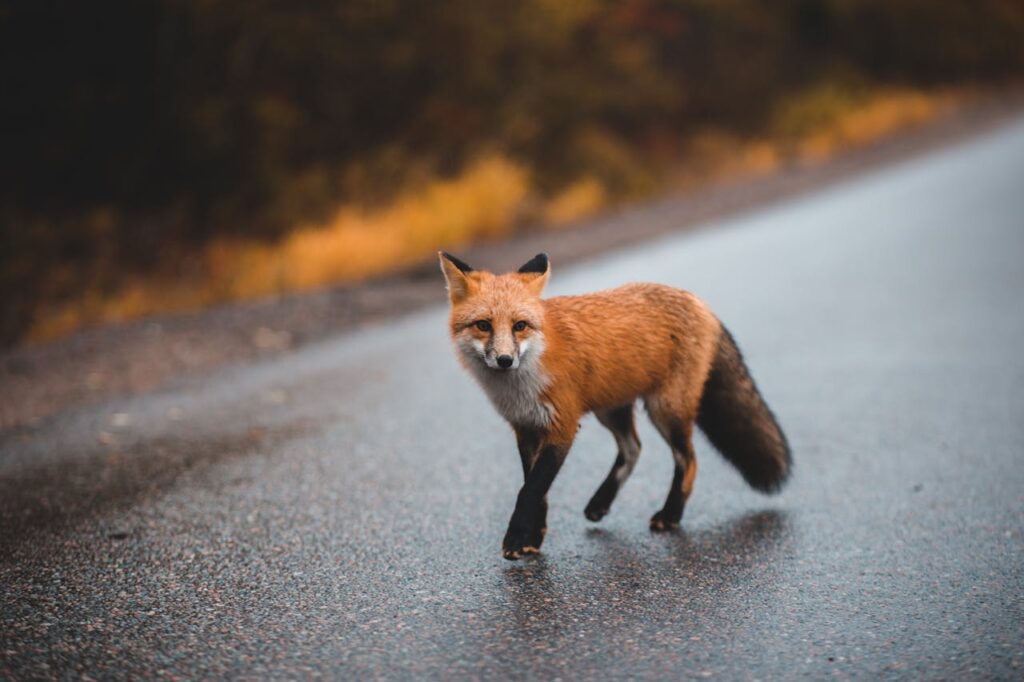
The red fox, with its iconic red fur and bushy tail, is a fascinating and adaptable creature that has captured human imagination for centuries. From their complex social behaviors to their remarkable hunting techniques, there is much to admire and learn about these resilient animals. Understanding the facts about red foxes not only enriches our knowledge but also highlights the importance of conservation efforts to protect them and their habitats.
Red foxes are more than just cunning characters in folklore; they are vital components of their ecosystems, playing key roles in maintaining ecological balance. Thus as we continue to study and observe these animals, we gain insights into their behavior, adaptation, and interactions with humans and other wildlife.
Promoting coexistence and conservation is essential for ensuring that red foxes continue to thrive in a changing world. Whether you encounter them in the wild, in urban environments, or through the lens of cultural stories, red foxes remain a symbol of adaptability and survival.
Next read my comprehensive article Interesting Facts About Bobcats
Finally by fostering an appreciation for red foxes and their role in nature, we can work towards a future where humans and wildlife coexist harmoniously, preserving the rich diversity of life on our planet. With ongoing research and conservation efforts, we can ensure that the fascinating facts about red fox continue to be discovered and celebrated for generations to come.


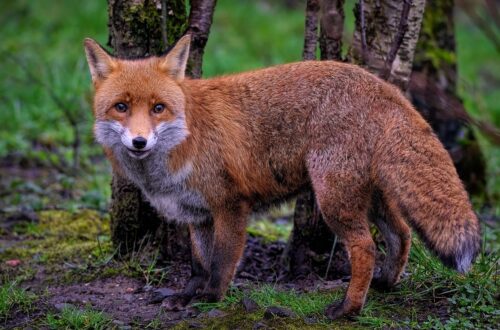
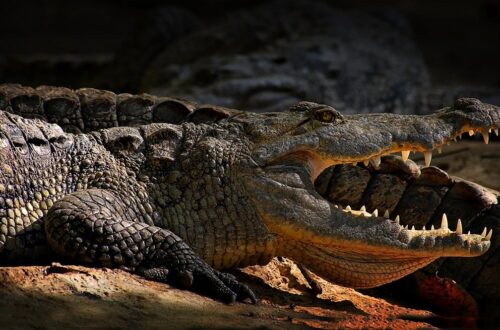

2 Comments
Pingback:
Pingback: